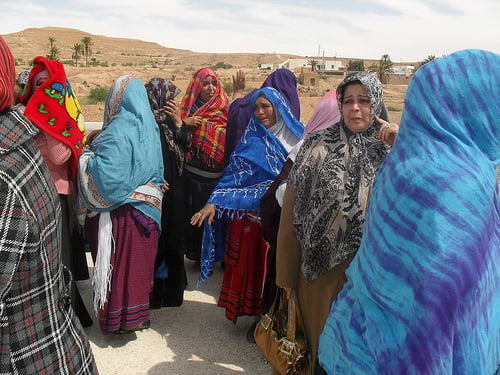
Is this just the beginning of the revolution for Libya’s Berbers?
Sofia Nazalya, MRG’s communications intern, looks at the revolution in Libya and its effects on the indigenous Berbers and questions if more should be done to ensure that this long oppressed group are not left behind.
Many of the rebels who fought in Libya’s Nafusa Mountains against the Gaddafi regime were not only fighting for democracy and fundamental freedoms, but also for their rights as indigenous Berbers, or “Amazigh” (a literal translation would be “Free Man”), as they prefer to be called.
The united front held by the Nafusa rebels, many of them Amazigh, against the armed forces secured the area surrounding the Tunisian border, which led the way to the advance on the eventual victory in Tripoli. However these significant contributions made by the Amazigh forces in the revolution seemed to be quickly forgotten, evidenced by the lack of representation of the Amazigh in the interim government recently announced by the Transitional National Council.

However, since the downfall of the Gaddafi regime indigenous Berber have begun to experience a greater amount of freedom in their cultural practice, a cultural revival of sorts – the teaching of Tamazight, the Amazigh language, previously banned, is now embraced in newly available language courses, whilst the airing of radio broadcasts and other cultural initiatives such as the restoration of old Amazigh houses has begun in a bid to preserve their way of life.
The Amazigh, who make up 9% of the Libyan population, have a long history of oppression dating back from the time of the Romans. In Gaddafi’sLibya, Amazigh texts, names and symbols were prohibited, suppressing the indigenous community’s identity and way of life. Arbitrary arrests, detentions and torture of Amazigh activists were part of Gaddafi’s vision of a pan-Arabic, ultra-nationalistic Libya. He even went so far as to state in several occasions that Amazigh identity was nothing more than a colonial invention and that all North Africans were Arab and nothing more.
Fortunately, this extreme form of oppression will not feature in the new Libya. However, what has the Arab Spring really brought to the table for the Amazigh? Can they expect nothing more than the ability to speak and learn their language and open cultural centres without fear of persecution and not much else? Is it a realistic notion to envision a Libya where adequate political representation and indigenous rights are constitutionally protected? The National Amazigh Libyan Conference (NALC) certainly seems to think that constitutionally protected rights is more than just an aspiration, seeing that their publicity campaign centres around this pertinent issue.
With the overthrow of Gaddafi and the establishment of indigenous advocacy groups such as the NALC and other Amazigh cultural groups, the future for the Amazigh seems more optimistic than it has ever been in Libya. A future of continued marginalization seems inconsistent with the spirit of democracy and freedom the Arab Spring took flight from. However as so many revolutions in history, the story hardly ever ends there, and often it is the rights of minorities that seem to be sacrificed or forgotten. A new hyper-nationalist Libya would put Amazigh rights at risk and put the Arab Spring several steps backwards. Only time will tell, though rigorous monitoring, international attention and ongoing advocacy will help ensure that the Amazigh are not forgotten.
—
This article reflects the sole opinion of its author and does not engage MRG’s responsibility.